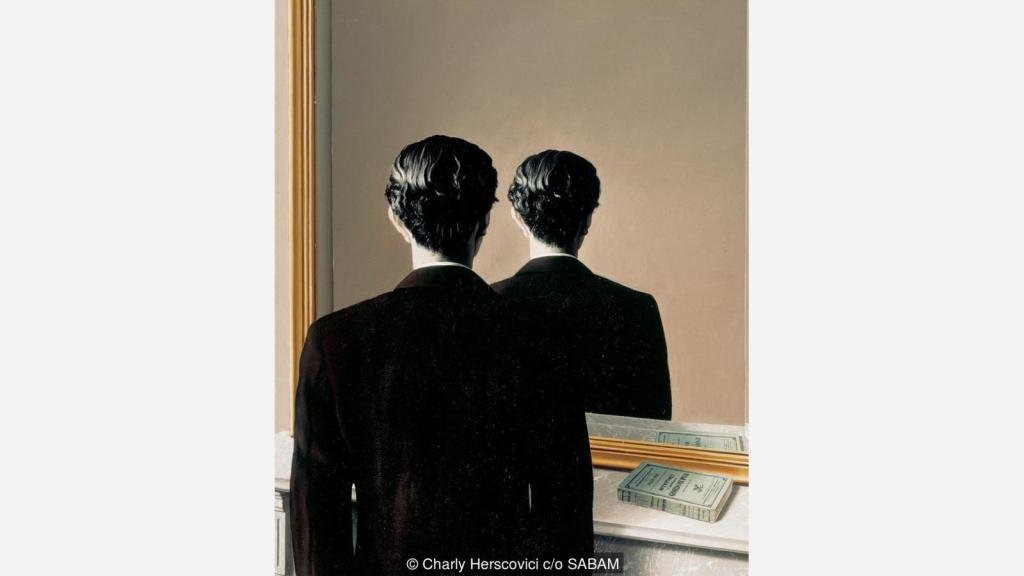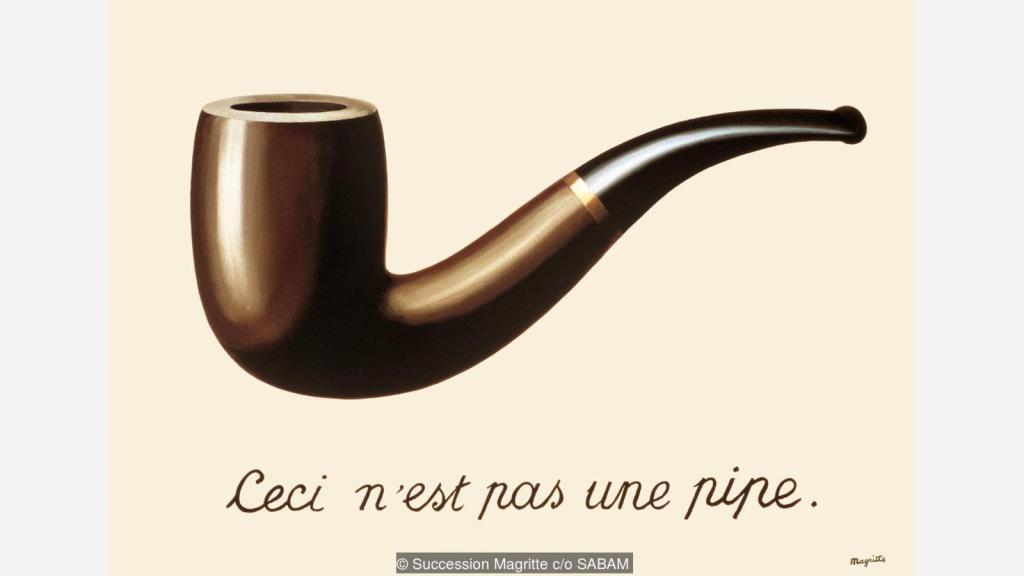In my “Why Art Became Ugly,” I claimed that modern art’s trajectory was to abandon art for philosophy.
In modernism, art becomes a *philosophical* enterprise rather than an *artistic* one. The driving purpose of modernism is not to *do* art but to *find out* what art is.
Here’s a new-to-me datum about René Magritte, from a BBC feature:
“Asking philosophical questions, rather than giving art historical answers, had long been Magritte’s aim. Although he had begun painting at the age of 12 and experimented with Cubism and Futurism, Magritte soon tired of painting as an end in itself and disliked being called an artist, considering himself a thinker who communicated through paint. Well versed in the history of philosophy, he was aware that from Plato to Hegel, figurative representation had been dismissed as a confusion of the senses and poetry considered the highest form of human expression.”[2]
Sources:
[1] “Why Art Became Ugly,” Navigator, 2004. Based on this 2003 lecture, ‘From Modern to Postmodern Art,” for the Foundation for the Advancement of Art, New York, 2003.
[2] Cath Pound, “Magritte and the Subversive Power of His Pipe,” BBC, 2017.


With this painting, Magritte conveys no theme to me in spite of a depiction obviously intended to make me think, rather than to simply appreciate or despair some material or social condition. Is that my failing? Since he clearly has some theme in mind, and the tone suggests an unpleasant or hopeless one, I judge that he has failed to convey it as an artist and/or to grasp a reasonable one as a philosopher.
I believe that it is consistent with Ayn Rand’s definition to say that the difference between art and mere decoration is that art embodies a theme: an idea that unifies the composition. To be an artist in this sense is to successfully convey the theme to viewers. Viewers share responsibility for discerning the theme, but the better the art work the easier this is.
I can imagine a theme for this painting not necessarily intended: The impossibility of seeing our true selves. But I’d say we can see ourselves as well as we can see others – generally better. And with effort and experience we can see pretty deep.
I’d say Magritte is neither a successful artist nor philosopher, but aspires to be both. Which is something, I guess, but a failure. Those aspiring only to be artists without philosophy become only decorators. Which can be useful, socially beneficial, and self-fulfilling work in itself, as opposed to that of many so-called modern artists.
An art work should convey something of its theme without a title, but a title helps with less successful works or for specific associations. The title here, “Not To Be Reproduced,” serves to acknowledge that the intended theme is mundane, the common place observation that everyone (everything) is unique.
Searching for something interesting, I find in enlarged images elsewhere, I can imagine the back of the head as a monster’s face with two small, wide spaced eyes. In which case the theme is that this guy is actually a monster – not to be reproduced. Which I judge to be equally conveyed and of equal usefulness as any other imagined for this painting.
Btw, the painting certainly fails as stand-alone decoration.
The artist who is not a philosopher (and a mystic) is an illustrator hack.
“The artist must be a philosopher. Socrates the skilled sculptor, Jean-Jacques Rousseau the good musician, and the immortal Poussin, tracing on the canvas the sublime lessons of philosophy, are so many proofs that an artistic genius should have no other guide except the torch of reason.” – Jacques-Louis David
“The artist should be a Philosopher. He should be a Sage and a Mystic. He will be exceedingly quick to Beauty, drawn in a very rapture to it. He must be shown that what ravages him was essentially the form of Divine Spirit, the organic beauty of that realm. Not one shape of beauty, but the Beauty-In-All, Beauty Absolute. For this he needs fall back upon the truth of philosophy, to discover that which, all unknowing, he harbors in his inward self.” – Plotinus
“Music is a higher revelation than all Wisdom & Philosophy.” – Beethoven
Magritte is a philosopher mystic with a nondual mind.
“My painting is visible images which conceal nothing… they evoke mystery and indeed when one sees one of my pictures, one asks oneself this simple question ‘What does that mean’? It does not mean anything, because mystery means nothing either, it is unknowable.” – Rene Magritte
“To be limited to understanding only what is understood; this is shallow indeed. Knowing that knowing is unknowable is true perfection. Where can I find a man who has forgotten words so that I can have a word with him?” – Zhuangzi
“Nonsense and beauty have close connections.” – E. M. Forster